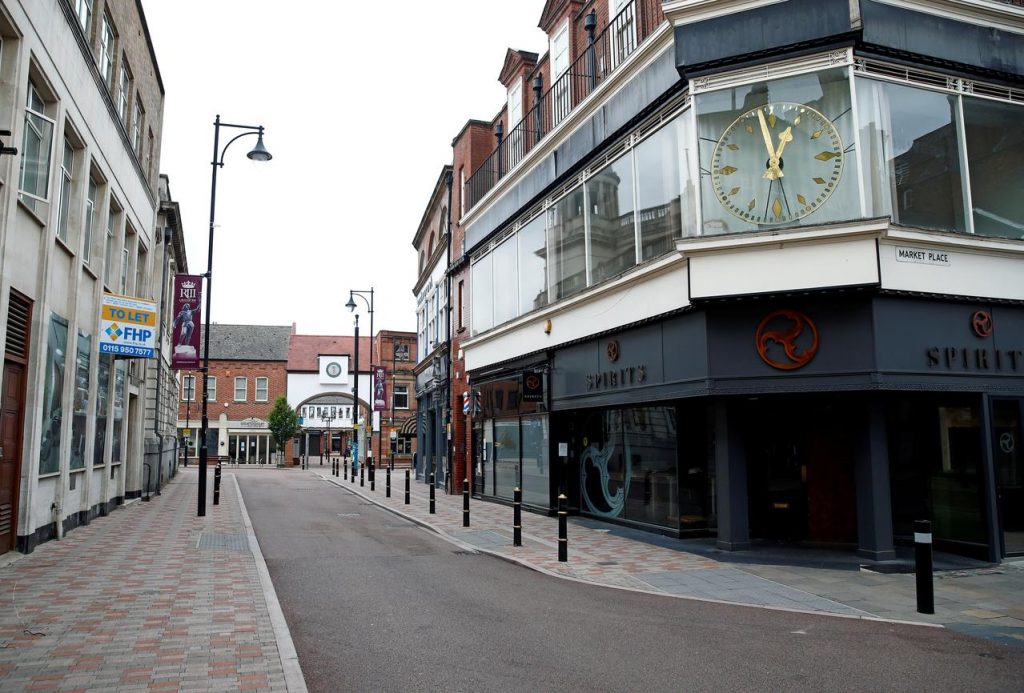Britain’s economy stumbled out of its coronavirus-induced slump in May, dashing hopes of a swift rebound as government budget forecasters said it was on course for its worst year since pre-industrial times.
Gross domestic product grew less than any economist polled by Reuters had forecast, up 1.8% after a record 20.3% slump in April when lockdown curbs were tightest, figures from the Office for National Statistics showed.
With activity in the dominant service sector not recovering as expected in May, Tuesday’s data fuelled doubts about how much of a bounce-back Britain will see after more businesses were allowed to reopen in June and July as Europe’s worst coronavirus outbreak eased.
“For anyone thinking the data were beginning to point to a sharp V-shape (recovery), today is something of a setback,” HSBC economist Simon Wells said.
The pound slipped to a two-week low against the euro and two-year British government bond yields fell to their lowest level on record after the data.
Fallout from COVID-19 slashed economic output by more than a quarter over March and April, and around 9 million Britons currently have their salary paid through a government programme supporting employers hit by the pandemic, which ends in October.
Finance minister Rishi Sunak announced a further 30 billion pounds of funding to support the economy last week, but has accepted that joblessness will rise.
The government’s Office for Budget Responsibility said on Tuesday that unemployment was likely to surge to 11.9% this year under its central scenario, and exceed 13% under a downside prediction that assumed COVID-19 damage would be harder to recover from.
Economic output in 2020 was likely to be 12.4%-14.3% lower in the two scenarios, the biggest drop in more than three centuries, while government borrowing would surge to between 322 and 391 billion pounds.
While this borrowing was necessary to support the economy, “it seems likely that there will be a need to raise tax revenues and/or reduce spending to put the public finances on a sustainable path,” the OBR said.
‘W’-SHAPED RECOVERY?
More than 44,000 people in Britain have died from COVID-19, the highest death toll in Europe, and a second wave of infections could bring a new round of lockdowns, derailing the rebound and damaging long-term confidence.
“Hopes of a ‘V’-shaped recovery are fading fast, and I suspect we’re looking at something resembling far more of a ‘W’ – a series of improvements and relapses, before a proper recovery takes hold,” said Tom Stevenson, an investment director at fund manager Fidelity International.
Britain’s government closed non-essential shops and other businesses to the public on March 23, shortly after ordering the closure of bars, restaurants and cinemas.
May’s limited economic rebound was driven by just 0.9% growth in the services sector, also well below economists’ forecasts.
The wholesale and retail sector made the biggest contribution to growth after being the largest drag in April.
Industrial output and construction also recovered strongly, in line with forecasts.
Economists said they had based their more upbeat forecasts for growth as a whole in May on private-sector surveys and other fast economic indicators that pointed to a more broad-based rebound.
“Firms were more cautious emerging out of lockdown than consumers,” Barclays economists Fabrice Montagne and Abbas Khan wrote, cutting their forecasts for GDP growth in 2020 and 2021.



